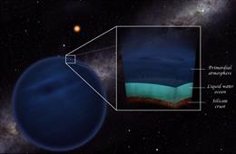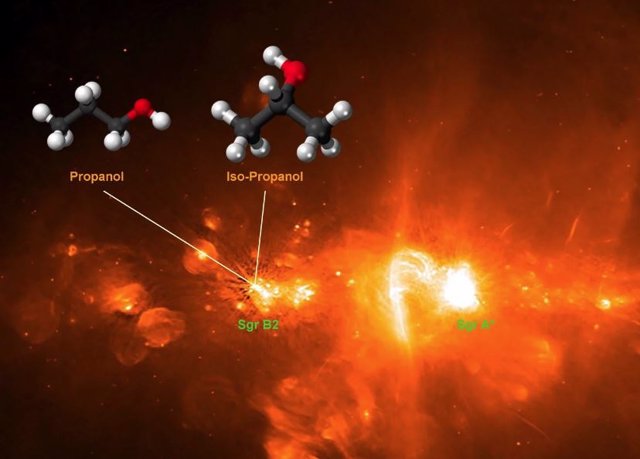Alcohol in space: the position of the star-forming molecular cloud Sagittarius B2 (Sgr B2) near the central source of the Milky Way, Sgr A*. – GLOSTAR WIKIPEDIA
June 28. () –
For the first time, isopropanol, a substance used as a disinfectant on Earth, has been identified in space and is the largest alcohol in molecular terms detected so far.
The identification was made possible by observations of the Sagittarius B2 (Sgr B2) star-forming region near the center of our galaxy, where many molecules have already been detected. It is the subject of an extensive investigation of its chemical composition with the ALMA telescope in Chile.
The search for molecules in space has been going on for more than 50 years. To date, astronomers have identified 276 molecules in the interstellar medium. The Cologne Database for Molecular Spectroscopy (CDMS) provides spectroscopic data to detect these molecules, contributed by many research groups, and has been fundamental in its detection in many cases.
The objective of this work is to understand how organic molecules are formed in the interstellar medium, in particular in regions where new stars are being born, and how complex these molecules can be. The underlying motivation is to make connections to the chemical composition of solar system bodies such as comets, as did, for example, the Rosetta mission to comet Churyumov-Gerasimenko a few years ago.
An outstanding star-forming region in our galaxy where many molecules have been detected in the past is Sagittarius B2 (Sgr B2), which is located near the famous source Sgr A*, the supermassive black hole at the center of our galaxy.
“Our group started investigating the chemical composition of Sgr B2 more than 15 years ago with the 30m IRAM telescope,” he says. it’s a statement Arnaud Belloche of the Max Planck Institute for Radio Astronomy (MPIfR) in Bonn/Germany, lead author of the study. “These observations were successful and led in particular to the first interstellar detection of several organic molecules, among many other results“.
With the arrival of the Atacama Large Millimeter/submillimeter Array (ALMA) ten years ago, it became possible to go beyond what could be achieved towards Sgr B2 with a single-dish telescope and a long-term study of the chemical composition of Sgr B2. that took advantage of the high angular resolution and sensitivity provided by ALMA.

So far, ALMA observations have led to the identification of three new organic molecules (isopropyl cyanide, N-methylformamide, urea) since 2014. The latest result of this ALMA project is now the detection of propanol (C3H7OH).
Propanol is an alcohol, and it is now the largest of this class of molecule ever detected in interstellar space.. This molecule exists in two forms (“isomers”), depending on the carbon atom to which the hydroxyl (OH) functional group is attached: 1) normal propanol, with the OH attached to a terminal carbon atom in the chain, and 2 ) iso-propanol, with OH attached to the central carbon atom of the chain.
Isopropanol is also well known as the key ingredient in hand sanitizers on Earth. Both isomers of propanol in Sgr B2 were identified in the ALMA dataset. It is the first time that isopropanol has been detected in the interstellar medium and the first time that normal propanol has been detected in a star-forming region.
The first interstellar detection of normal propanol was obtained shortly before the ALMA detection by a Spanish research team using single dish radio telescopes in a molecular cloud not far from Sgr B2. However, detection of isopropanol towards Sgr B2 was only possible with ALMA.















Add Comment